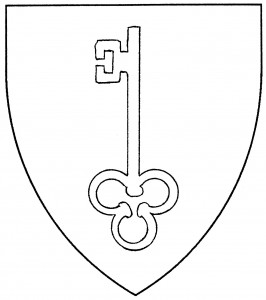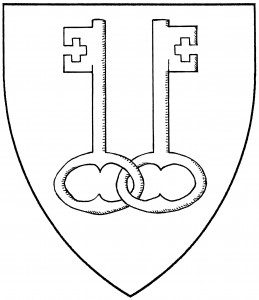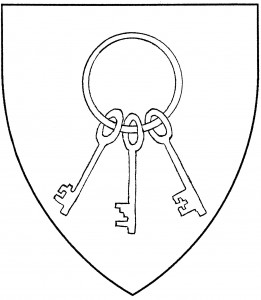A key is a metal implement for opening a lock by moving its bolt; it’s found as early as c.1275, in the allusive arms of Chamberlain [ANA2 477]. As the attribute of St. Peter, keys are frequently found in episcopal and papal armory.
The key is palewise, wards to chief, by mundane and Society default. (For many years, the Society had no default for palewise keys, so the orientation was explicitly blazoned.) When the key is fesswise, its wards are to dexter, again by both mundane and Society default.
The handle of the key may be termed its “bow” [Parker 343]. A “pair of keys” has two keys palewise, their wards outward (the pair is sometimes explicitly blazoned “addorsed” for this reason); the bows are drawn touching, either linked or conjoined (as in the arms of Siganer, 1605 [Siebmacher 34]). A “ring of keys” is a set of keys (usually three) joined by a large ring or annulet. In this case, the keys’ wards are certainly to base by Society default, although period examples (e.g., the arms of Beheim, 1605 [Siebmacher 66]) can also have the keys in pall.
The Seneschalate bears: Gules, a key fesswise Or.
The Chastellany bears: Vert, a key palewise wards to sinister base Or.
Avelina Keyes bears: Per pale Or and sable, in pale three keys fesswise counterchanged.
Hélène de Lyon bears: Gules, a pair of keys addorsed with wards to chief and bows interlaced Or.
Ysabeau Boucher bears: Azure, a ring of four keys in saltire argent.


